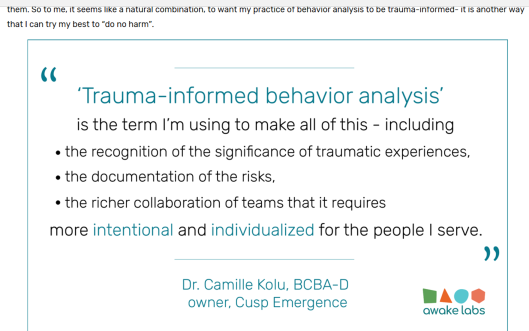
A family member leaves a job aid easily followed to use technology while the “tech-savvy” person is away

A separate job aid for turning off the system
To begin, it is helpful to understand that although behavioral support can often be widely useful, some strategies are perceived as “for autism”, “for children”, or even “for parents only”.
At Cusp Emergence, it’s about relationships– whether with our peers, employees, employers, family members or significant others (or even ourselves).
While today’s idea (the “job aid”) is often linked with the workplace environment, this article is about compassion and individualized support. Perhaps you’d like to experience this article as a challenge you to find yourself in one of the stories even if this week’s idea doesn’t seem immediately related to your life’s work.
Bonnie and technology: Bonnie used to avoid technology while her housemate was away. She described herself as resentful that she was often bored, never played a game by herself, or turned on the complicated computer-controlled television while alone, and claimed she never had the opportunity to learn how. Her roommate dominated the remotes when they played together and she always felt it was useless to figure out herself. It sounded strange to her friends, she knew, that she couldn’t work it. But she never had the opportunity or need or desire to do it anyway.
Joey and laundry: Joey never did laundry. Why should he; his partner (or even their son, who enjoyed that particular chore) usually did it. Sometimes he resented his slowly shrinking jeans, and often his wife tried not to resent the fact that Joey never helped. But it was honestly quite complicated, and past attempts had not gone well, producing pink underwear for everyone in the family, or shrunken, discolored sweaters.
Benny and the restroom: Benny was 15 years old and growing, and unlike most of his family and friends, he had never mastered the final steps in his toilet routine. He attended the special education program at his local school, and his paraprofessional often needed to stand at the door asking if he needed help. He usually came out with his pants down around his ankles and was instructed and guided back to the bathroom, where he was instructed to pull up his pants and turn off the light before once again entering the classroom. Often he yelled “Go away!” and slammed the door when his paraprofessional entered to assist him.
How are these stories related?
- The stories all involve communication partners, life partners, or an activity partner completing some or all of the task involved, instead of the client completing it himself or herself.
- In each of these situations, there was a “learning history” in which the partner had TRIED to communicate how, why, and when to do these tasks. But the communication had not been effective! Parents and partners often try repeating instructions, yelling, or standing beside their partner naming every next step.
- Finally, these situations all hold hidden potential payoffs if clients learned to do these things themselves.
Consider:
- If Bonnie used technology by herself, she could have a greater variety of enjoyable things to do while her partner was away. She might be able to develop individual interests. She might have time to practice alone and therefore enjoy the activity even more when they did it together later. She could feel good about being an active participant in the household.
- If Joey did the laundry by himself, he could enjoy wearing what he wanted or needed to wear without someone else needing to do it, having to stop something they needed to do in order to fulfill his request. If he did it himself, he could have access to clean clothing that he had picked out. He could feel good about contributing to the household.
- If Joshua finished his routine in the bathroom and came out to rejoin the group, he could enjoy doing it by himself. He could feel good about doing it himself and joining the social expectations of his group. He could immediately transition to a new activity with his friends, instead of feeling embarrassment as others laughed or pointed to his pants around his ankles.
In every case above, job aids provided compassionate, individualized assistance to bridge the gap between the need to complete a task, and the actual execution of that task.
Toward solutions
Bonnie’s partner whipped up a set of easy-to-follow job aids that helped her navigate quickly through technology that previously had seemed mystifying. When her partner was out of town, Bonnie now used it herself and enjoyed the freedom.
Joey’s partner posted easy job aids (post-it notes) above the laundry machines. When his partner was out of town it was easy to see what to wash together or separate, which buttons to push, and how hot or cold the water needed to be.
Joshua’s paraprofessional and teacher posted reminders near the bathroom door that visually reminded him to check his pants and zipper and turn out the light.
Here are some of the potential benefits Bonnie, Joey, and Joshua may begin to enjoy:
- Ability to meet a need or want alone
- Gain more control over their life
- The chance to gain mastery over something they will likely need to do in the future
- The ability to rely on themselves instead on someone else
- Increased range of options at any one time
- Decreased dependence on others
- Dignity, autonomy, confidence, etc
A final note: After we begin to do more for ourselves, it is compassionate for our life partners, parenting partners, communication partners, peers, or providers to consider the importance of whether, how, when, and why they will fade out their assistance. More to come on this topic in a future post!




